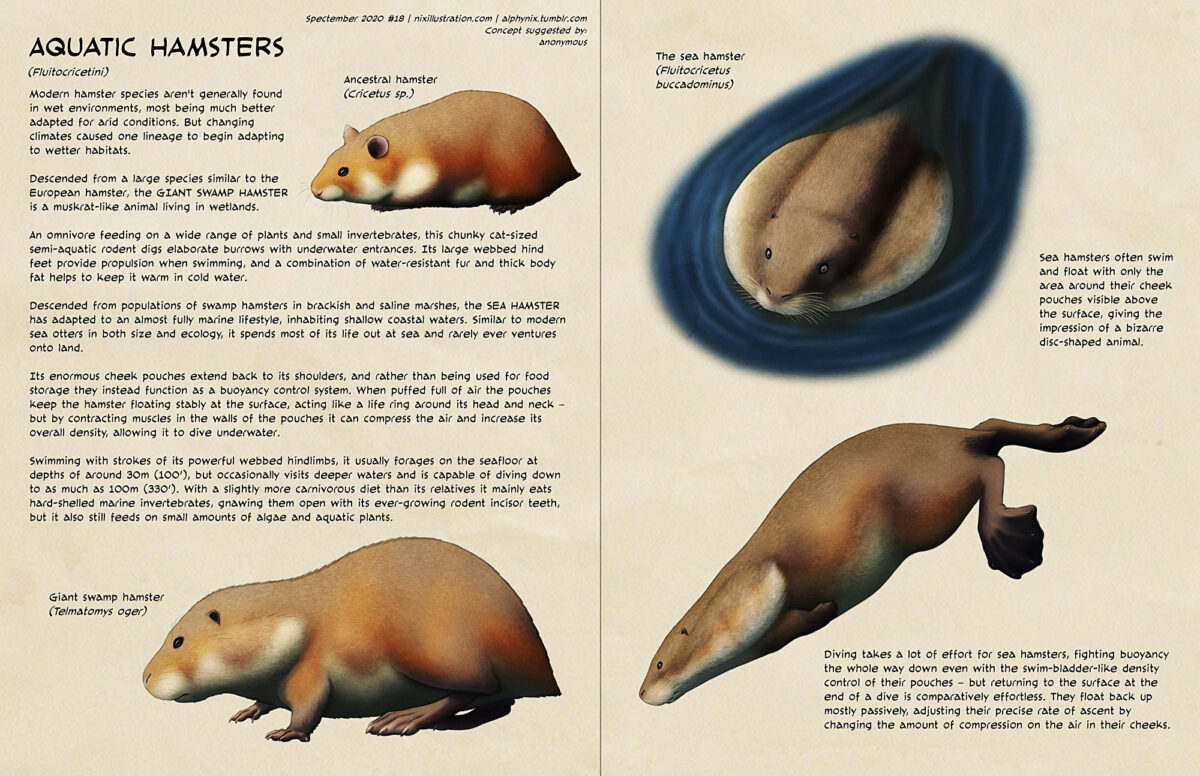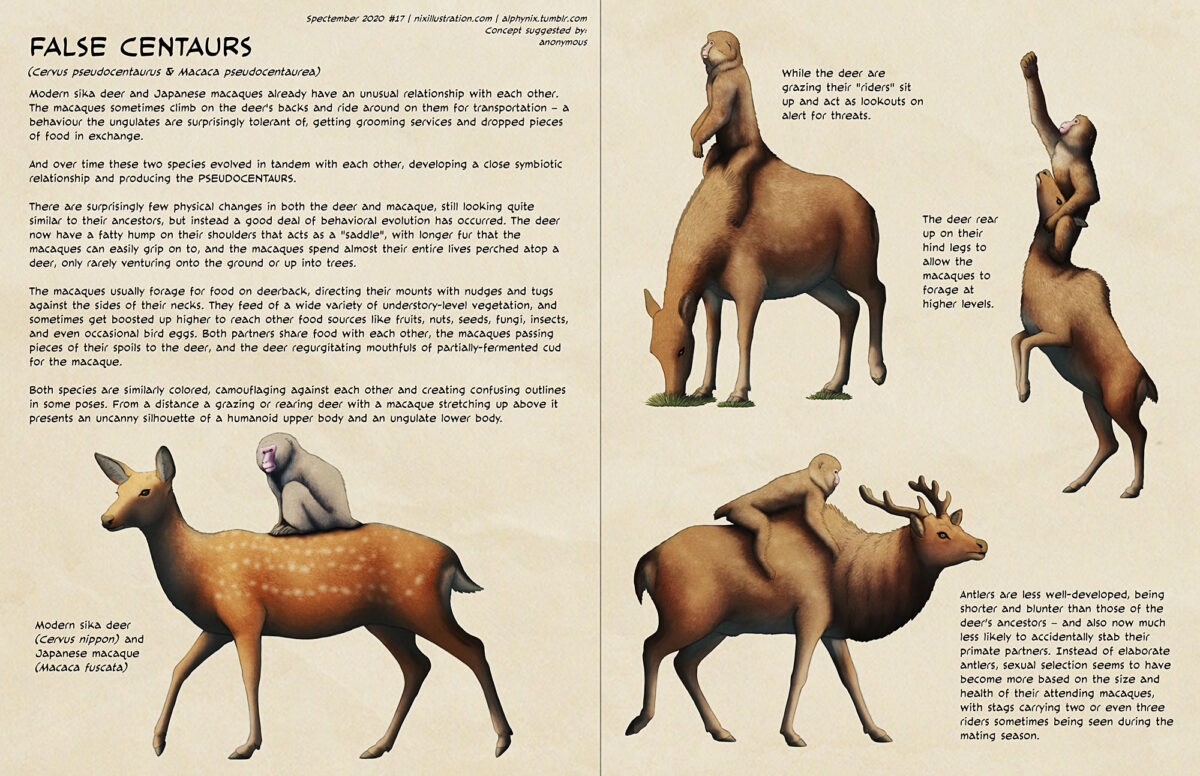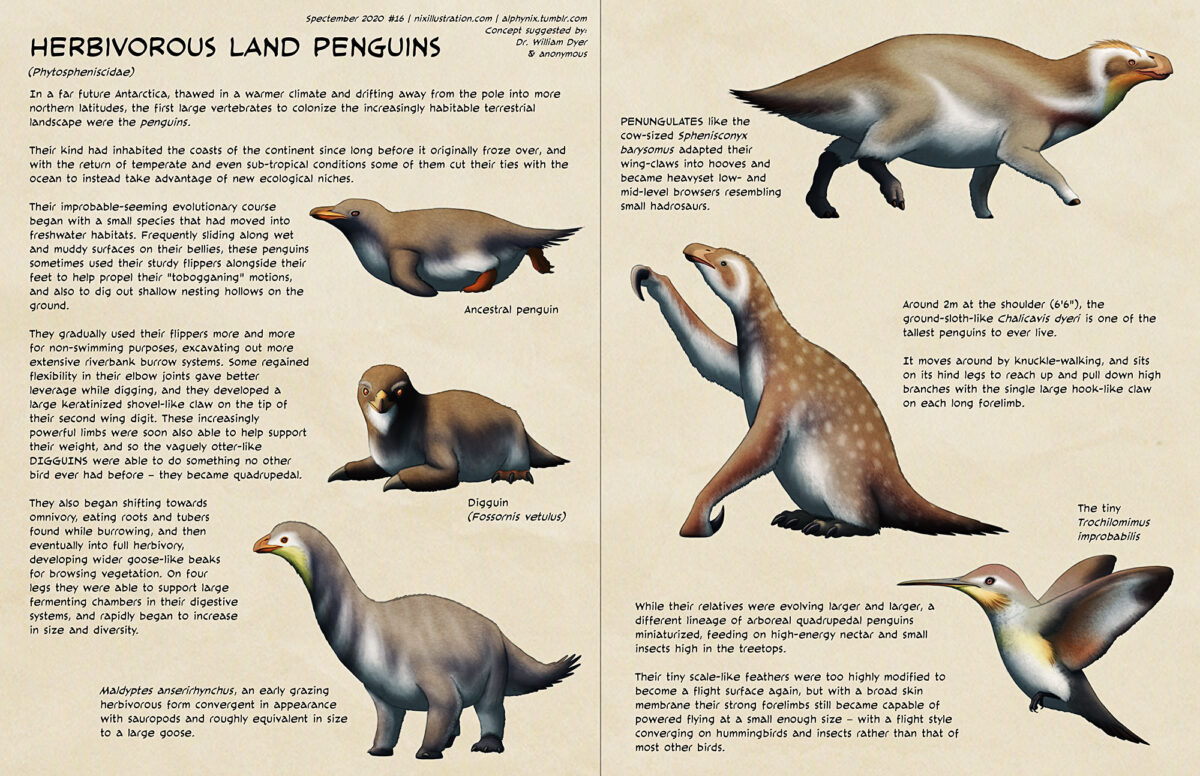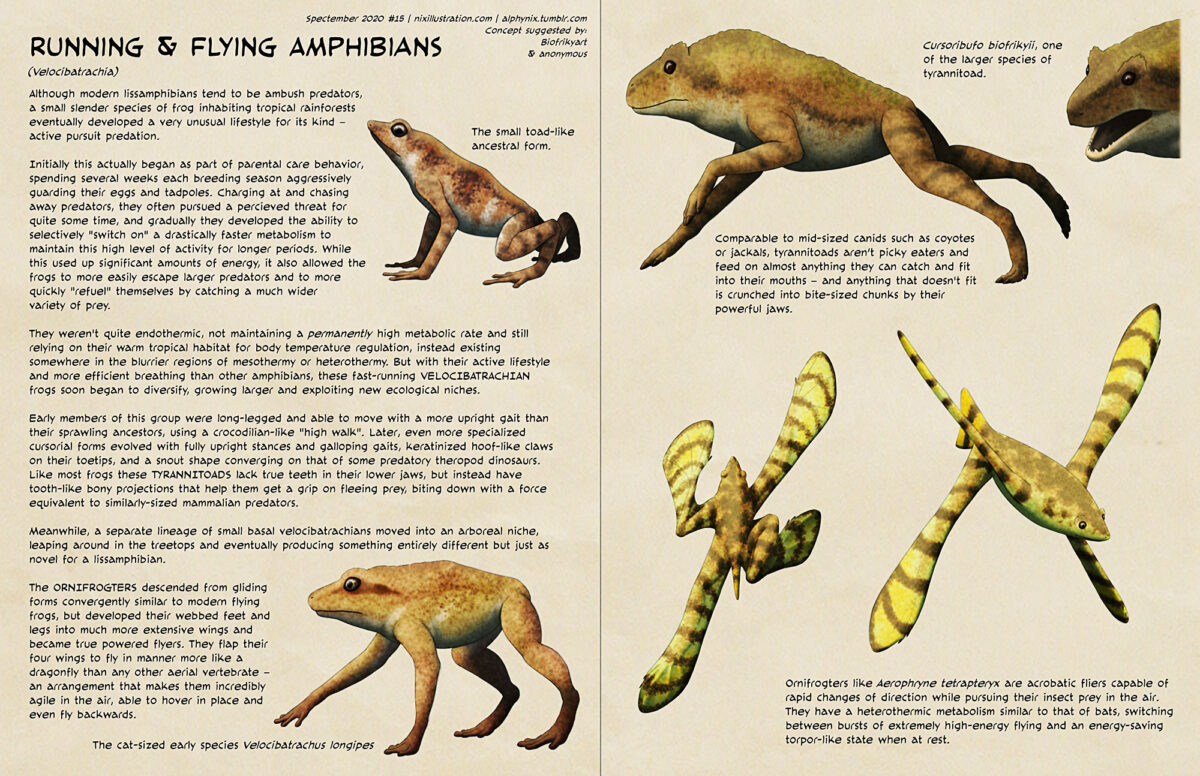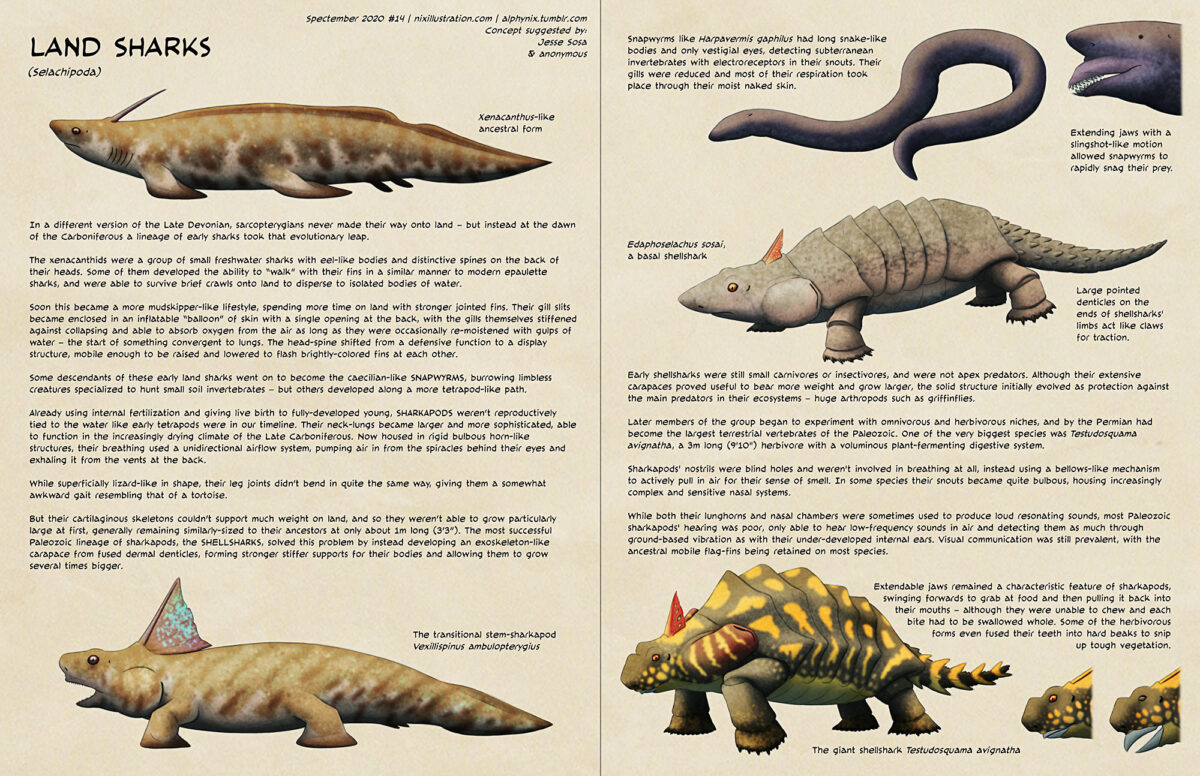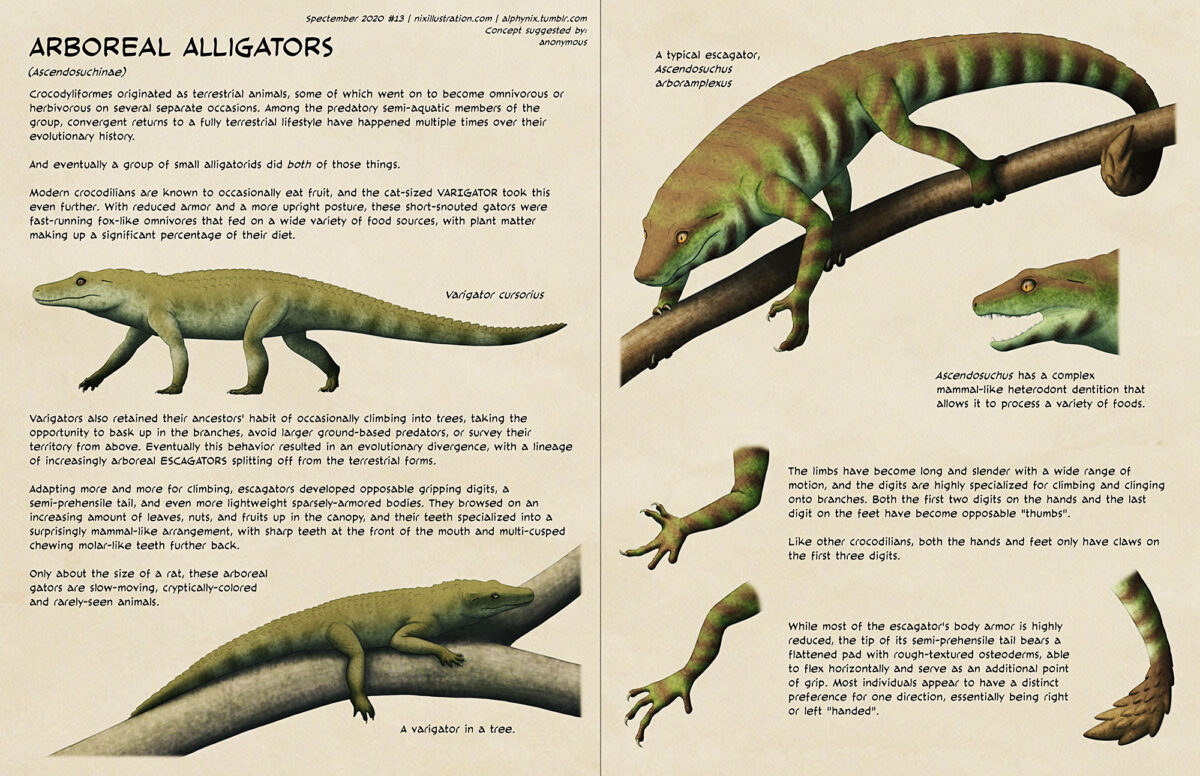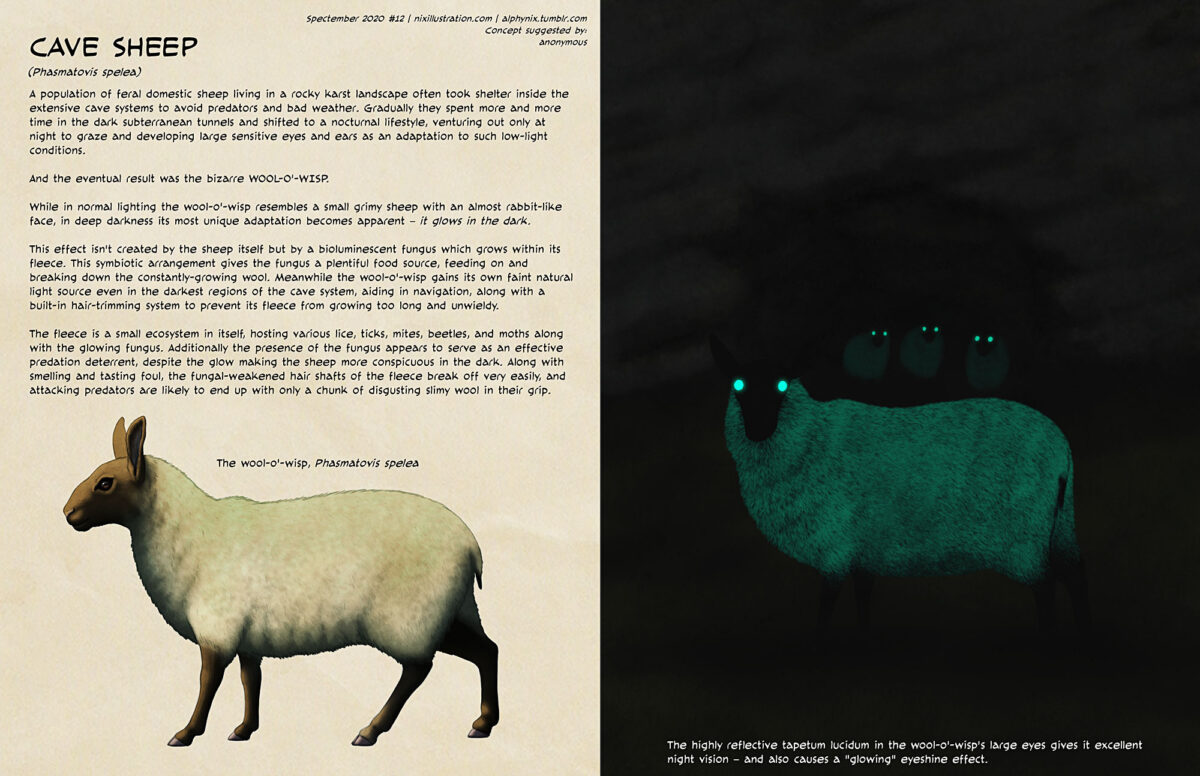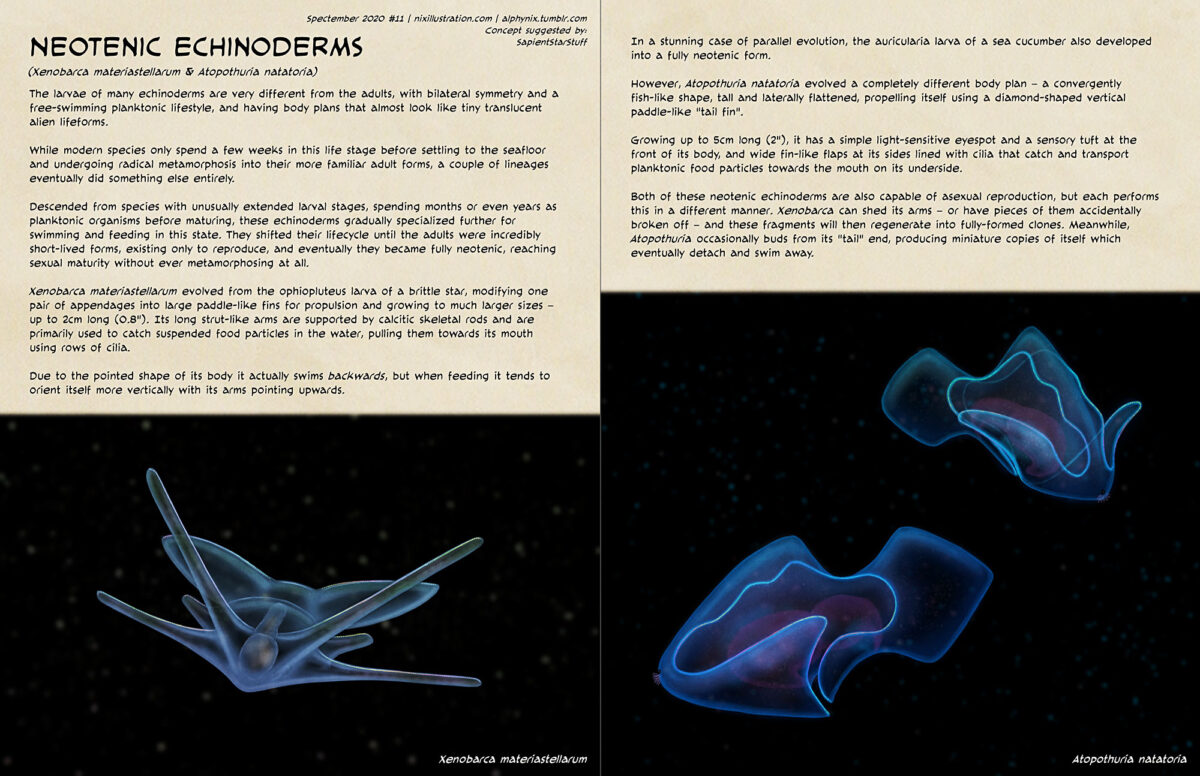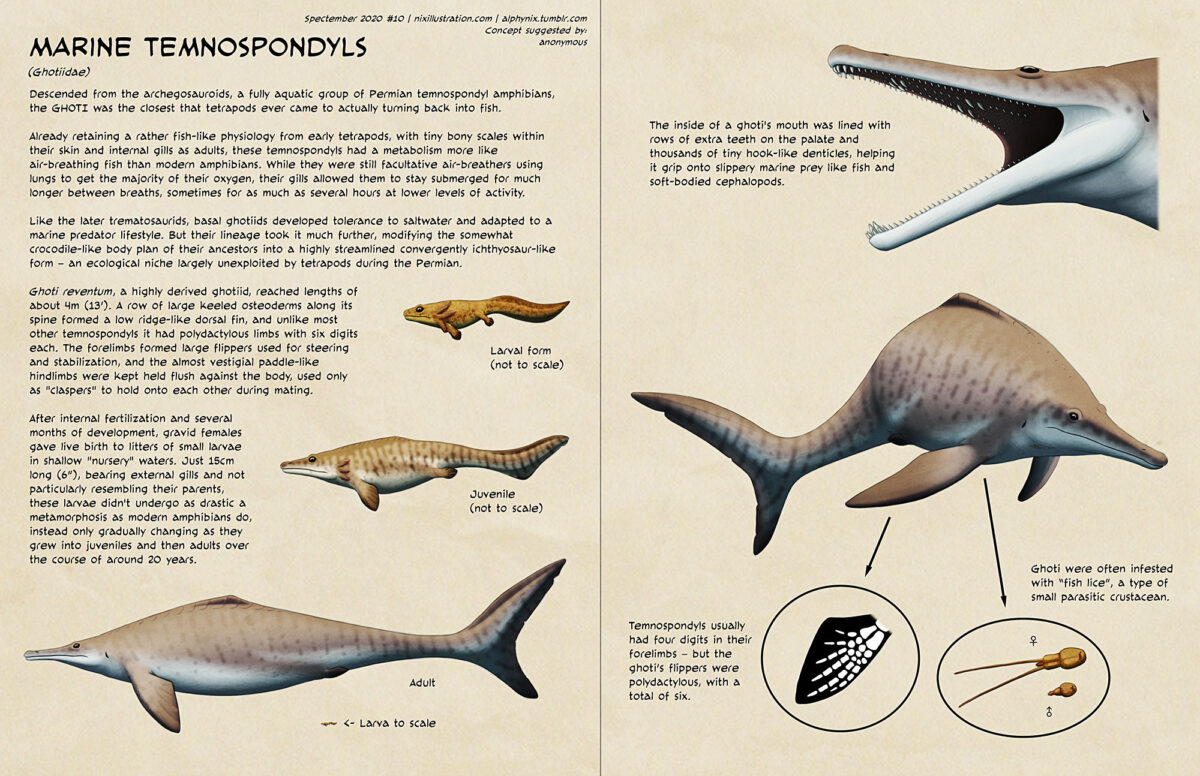Transcript for the text on the image under the cut:
Continue reading “Spectember #18: Aquatic Hamsters”Category: not paleoart
Spectember #17: False Centaurs
Transcript for the text on the image under the cut:
Continue reading “Spectember #17: False Centaurs”Spectember #16: Herbivorous Land Penguins
(also flying ones because why not)
Transcript for the text on the image under the cut:
Continue reading “Spectember #16: Herbivorous Land Penguins”Spectember #15: Running & Flying Amphibians
Transcript for the text on the image under the cut:
Continue reading “Spectember #15: Running & Flying Amphibians”Spectember #14: Land Sharks
(I will probably do more with these pipe-necked weirdos at a later date.)
Transcript for the text on the image under the cut:
Continue reading “Spectember #14: Land Sharks”Spectember #13: Arboreal Alligators
Transcript for the text on the image under the cut:
Continue reading “Spectember #13: Arboreal Alligators”Spectember #12: Cave Sheep
Transcript for the text on the image under the cut:
Continue reading “Spectember #12: Cave Sheep”Spectember #11: Neotenic Echinoderms
Transcript for the text on the image under the cut:
Continue reading “Spectember #11: Neotenic Echinoderms”Spectember #10: Marine Temnospondyls
Transcript for the text on the image under the cut:
Continue reading “Spectember #10: Marine Temnospondyls”Spectember #09: Wading Hesperornitheans
Transcript for the text on the image under the cut:
Continue reading “Spectember #09: Wading Hesperornitheans”
